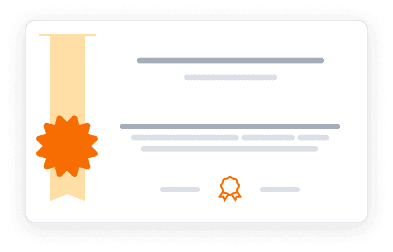Master rigid body dynamics in mechanical engineering. Learn kinematics, kinetics, and 3D motion analysis.
Master rigid body dynamics in mechanical engineering. Learn kinematics, kinetics, and 3D motion analysis.
This comprehensive course on rigid body dynamics, a fundamental subject in mechanical engineering, offers an in-depth exploration of force, motion, and energy principles. Students will gain a thorough understanding of Newton's 2nd law and its applications in both particle and rigid body dynamics. The course covers essential topics such as absolute and relative kinematics, Newton-Euler equations, work-energy principles, impulse-momentum, and 3D motion analysis. Through a series of video lectures, practice problems, and assignments, learners will develop the skills to analyze complex mechanical systems and solve real-world engineering problems. This course is ideal for intermediate-level students with a background in high school physics and university-level calculus, providing a solid foundation for advanced studies in mechanical engineering and related fields.
4.6
(26 ratings)
3,954 already enrolled
Instructors:
English
What you'll learn
Understand the principles of rigid body kinematics and kinetics
Apply Newton-Euler equations to analyze rigid body motion
Master the concepts of work-energy and impulse-momentum for rigid bodies
Analyze 3D motion of rigid bodies, including rotation and general motion
Solve problems involving gyroscopic motion and steady precession
Develop skills in mathematical modeling of complex mechanical systems
Skills you'll gain
This course includes:
10.35 Hours PreRecorded video
8 assignments
Access on Mobile, Tablet, Desktop
FullTime access
Shareable certificate
Get a Completion Certificate
Share your certificate with prospective employers and your professional network on LinkedIn.
Provided by

Top companies offer this course to their employees
Top companies provide this course to enhance their employees' skills, ensuring they excel in handling complex projects and drive organizational success.





There are 15 modules in this course
This course provides a comprehensive introduction to rigid body dynamics, a crucial subject in mechanical engineering. Students will explore the fundamentals of force and motion in the context of rigid bodies, building upon their knowledge of particle dynamics. The curriculum covers key topics such as absolute and relative kinematics, Newton-Euler equations, work-energy principles, and impulse-momentum relationships. Learners will also delve into 3D kinematics and kinetics, including complex phenomena like gyroscopic motion. Through a combination of theoretical lectures and practical problem-solving exercises, students will develop the analytical skills necessary to tackle real-world engineering challenges involving rigid body systems.
Lecture Note
Module 1 · 1 Hours to complete
Introduction to Rigid Body Kinematics
Module 2 · 38 Minutes to complete
Relative Velocity & Acceleration
Module 3 · 56 Minutes to complete
Motion Relative to Rotating Axis
Module 4 · 30 Minutes to complete
Fundamentals of Kinematics of Rigid Body
Module 5 · 1 Hours to complete
General Plane Motion of Rigid Body
Module 6 · 37 Minutes to complete
Work and Energy of Rigid Body
Module 7 · 56 Minutes to complete
Work and Energy of Rigid Body (Continued)
Module 8 · 47 Minutes to complete
Impulse and Momentum of Rigid Body
Module 9 · 50 Minutes to complete
Impulse and Momentum of Rigid Body (Continued)
Module 10 · 29 Minutes to complete
3D Kinematics of Rigid Body
Module 11 · 1 Hours to complete
3D Kinematics of Rigid Body (Continued)
Module 12 · 22 Minutes to complete
3D Kinetics of Rigid Body
Module 13 · 53 Minutes to complete
3D Kinetics of Rigid Body (Continued)
Module 14 · 22 Minutes to complete
Gyroscopic Motion
Module 15 · 3 Hours to complete
Fee Structure
Payment options
Financial Aid
Instructor
Pioneering Leadership in Science and Technology Policy
Professor Sukyung Park, a member of the Department of Mechanical Engineering at KAIST, was appointed as the science and technology adviser to President Jae-in Moon on May 4, making her the youngest member of the president’s senior aide team at Chong Wa Dae at the age of 47. A spokesperson for Chong Wa Dae stated that Professor Park, known for her significant involvement in science and technology policymaking, will play a crucial role in advancing the government's efforts in science and technology innovation, particularly in the information and communications technology (ICT) sector. Joining KAIST in 2004 as its first female mechanical engineering professor, she is a biomechanics expert recognized for her extensive research on biometric mechanical behaviors. Additionally, she is a member of the KAIST Board of Trustees and has previously served as a senior researcher at the Korea Institute of Machinery and Materials (KIMM) and on the Presidential Advisory Council on Science and Technology. Professor Park graduated from Seoul Science High School as its first-ever two-year graduate and earned both her bachelor’s and master’s degrees in mechanical engineering at KAIST, before completing her Ph.D. at the University of Michigan.
Testimonials
Testimonials and success stories are a testament to the quality of this program and its impact on your career and learning journey. Be the first to help others make an informed decision by sharing your review of the course.
Frequently asked questions
Below are some of the most commonly asked questions about this course. We aim to provide clear and concise answers to help you better understand the course content, structure, and any other relevant information. If you have any additional questions or if your question is not listed here, please don't hesitate to reach out to our support team for further assistance.
.png&w=128&q=75)


